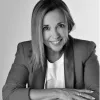
OBS Report: Women in leadership and visibility positions
Europe has now closed 76% of its gender gap

- The overall gender gap has closed to 68.6%, especially in access to education and health. It is maintained especially in the political sphere.
- In strategic sectors such as technology and artificial intelligence, female participation remains marginal.
- The lack of legislation guaranteeing equal pay contributes to the perpetuation of inequalities in many countries.
- An OBS report proposes creating corporate policies that monitor the proportion of women in leadership positions, implementing educational programmes to bring more women into STEM professions and promoting cultural changes from an early age to challenge stereotypes.
February 2025. OBS Business School, an institution belonging to Planeta Formación y Universidades, publishes the Gender Gap Report 2025: Women in positions of leadership and visibility, directed by Professor Marta Grañó. This analysis highlights that, although progress has been made in reducing the gender gap globally, these changes are slow and uneven.
According to the World Economic Forum's Global Gender Gap Index 2024, the global gap has closed to 68.6%, a marginal improvement of only 0.1 percentage points from the previous year. However, when this progress is broken down by dimension, significant disparities emerge: on the one hand, the gap in women's participation and economic opportunity is closed at only 60.1%, which shows profound inequalities in women's representation in the labour market, perceived income and presence in leadership positions. As the author points out:
Women account for 10% of CEOs in Fortune 500 companies, a percentage that, although up from previous years, is still remarkably low.
On the other hand, the gap in access to education is now virtually non-existent, closed at 94.5%, with significant gains in enrolment and educational attainment. However, challenges persist in the inclusion of women in STEM (science, technology, engineering and mathematics) disciplines, especially in low- and middle-income countries. In strategic sectors such as technology and artificial intelligence, female participation remains marginal, reflecting the urgent need for targeted interventions to reverse this situation. Last year, women in this field accounted for only 28.2% compared to 47.3% in the non-STEM workforce. Moreover, the gender gap in progression to leadership roles, known as ‘drop to the top’, is also more pronounced in STEM occupations, where only 42% of women reach executive levels compared to 46.3% in non-STEM occupations.
Women's participation in the AI industry remains limited (27%), especially in technical roles such as software engineers and data scientists, where this figure is further reduced. In fact, only 10% of leading AI tech companies have women in senior management roles, such as CEO, CTO or chief innovation officer. Some AI companies are already working to improve the diversity of their talent through measures such as collaborating with diversity-focused professional associations when recruiting candidates. In startups this percentage is slightly higher, at 14%, thanks to the rise of female entrepreneurs who are leading AI-based initiatives in areas such as health, energy and education. Outstanding examples of female leadership in this area include Fei-Fei Li, co-director of Stanford's Human-Centered Artificial Intelligence Institute and a pioneer in the development of computer vision, and Cynthia Breazeal, founder of the field of social robotics and director of the Personal Robots Group at the MIT Media Lab.
Global initiatives to promote gender equality in STEM professions, such as inclusive policies in companies and visibility campaigns for women, have started to yield tangible results and in recent years the representation of women has grown significantly in regions such as Europe and North America, driven by quotas and diversity policies.
In the area of health and survival, the gender gap is almost closed (96.1%) although issues such as unequal access to maternal health services in developing regions remain a concern. But undoubtedly the area where the gap is still huge (closed at only 22.1%) is politics. Women's representation in parliaments and governments remains very limited.
The gender gap by region
The lack of legislation guaranteeing equal pay contributes to the perpetuation of inequalities. According to the World Bank's ‘Women, Business and the Law 2023’ report, in 93 of the 190 countries analysed, there is no legislation mandating equal pay for work of equal value. This lack of robust legal frameworks allows discriminatory practices to persist, negatively affecting women's economic participation and financial empowerment. But the situation is particularly worrying in regions such as South Asia, where 80% of countries lack laws to ensure equal pay for women and men. This same indicator places Latin America and the Caribbean at 63.6%. Europe is the region with the best position on this point, since only 12.8% of the countries do not have equal pay laws. As we can see, the data varies significantly between the different areas of the planet. Western Europe is the area with the highest equity index (the gap is closed at 76.3%). Countries such as Iceland, Norway and Finland lead in gender parity with consistent gains in economic participation and political empowerment. In North America, the gap is closed at 75%, driven by improvements in female representation in corporate and political leadership positions, yet significant wage disparities persist. Latin America and the Caribbean have managed to close 74.3% of their gap, with gains in access to education and health, but female representation in this area in political leadership roles remains uneven. In South Asia, the gap remains closed at only 63.4%. Structural and cultural problems, such as low economic participation and gender-based violence, limit progress. Sub-Saharan Africa has closed 68.2% of its gap with notable progress in political empowerment in some countries such as Rwanda, although major challenges remain in economic participation. Finally, the Middle East and North Africa have only 62.6% of the gap closed, reflecting deep structural inequalities affecting women's economic and political participation.
Key actions to reduce the gender gap
The OBS report outlines a number of effective strategies to further reduce the gender gap: on the one hand, creating corporate policies that include monitoring the proportion of women in leadership positions and encouragement measures; on the other hand, the implementation of educational programmes such as girls‘ programmes and specific scholarships for women in STEM studies, which have already shown a significant impact on closing these gaps; and cultural changes promoted from an early age to challenge stereotypes and unconscious biases that limit girls’ aspirations. The report proposes inclusive leadership as a driver of change.
Content written by:
Carmen García-Trevijano
OBS Business School's Press Office



